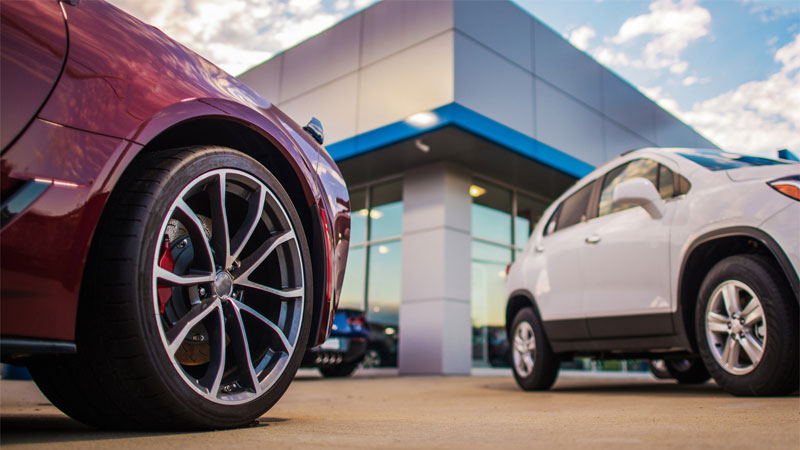If you are in the market for a new vehicle you are in good company. More than 17 million new cars, trucks, vans, and SUVs are sold most years. Further, another 40 million or so used car transactions are conducted annually.
It is no wonder why personal transportation is so important to most of us.
Purchasing a vehicle, however, is fraught with challenges. To begin, negotiating the price is one of the most difficult challenges consumers face. In recent years, with a global pandemic and a worldwide semiconductor chip shortage in play, incentives have truly shrunk or were eliminated entirely.
Still, paying close to the MSRP (Manufacturers Suggested Retail Price or sticker price) does not mean savings cannot be had. You may have to find them in other areas, such as receiving more cash value for your trade.
Even if you are a deft negotiator, the cost for your vehicle may be quite a bit higher than what you think. That is where the out-the-door price or figure becomes known. What it should not become is a total surprise to you, the consumer.
Five Components of the Out-the-Door Price
Essentially, there are five components of out-the-door pricing. We will examine the five, then add a few more expenses that could drive up your final cost.
1. Negotiated Price
Few consumers ever pay the sticker price listed on a vehicle Monroney label. The Monroney features a breakdown of the cost, including base price, trim level, packages, individual options, and related costs such as the destination fee.
On some vehicles, a dealer markup is added. This means you not only will pay the among listed on the window sticker, but whatever additional funds the dealer charges.
Keep in mind that prices are almost always negotiable. Thus, you have a choice of either accepting a price, rejecting it, offering a counter price, or simply ending the deal and moving on.
2. Sales Taxes, State and Local
Nearly every state or jurisdiction charges sales tax on a new vehicle. That cost, though, may not align with the tax charge for other consumer goods. In any case, it is important to know how much taxes you will pay.
For instance, if you are purchasing a $40,000 new vehicle and a 3% tax is assessed, that is a $1,200 expense that will go to government coffers. It is also an expense you cannot avoid. Indeed, the dealer will collect the fee and pass it along to the state.
3. Documentation and Other Dealer Fees
The dealer may charge other fees, but one is typically unavoidable. And that is the documentation fee. Most states allow it and whatever that cost is the dealer keeps. This fee covers the dealer’s expense in preparing the sales agreement and related paperwork, back-office overhead, and filing records with the DMV.
How much you pay for a documentation fee depends on where you live. For example, in some states, the rate is reasonable, which might cost you less than $150. In other states, the charge is quite high and may add hundreds of dollars to your final cost. If the state does not regulate what the dealer can charge, that fee may vary from dealer to dealer.
A dealer may charge several additional fees. These include finance fees, processing, dealer prep, and a transportation fee to secure a vehicle from another location. Be mindful of what you are being charged and ask the dealer rep to explain them. Some of these “special” fees can be eliminated or reduced upon request.
4. DMV Titling and Registration Fee
Dealers must collect a fee for the state to issue a title. They will also collect a registration fee. Even if your tags (license plates) are transferred from your trade to the new vehicle, a cost is assessed. You can not avoid whatever fees the government demands above the sales tax.
5. Auto Loan Interest Costs
Unless you are paying cash for your ride, your loan costs are another factor added to your out-the-door price. Depending on the amount borrowed and the interest rate, you may discover hundreds to thousands of dollars added to your out-the-door cost.
Consumer Considerations
Add everything discussed thus far and you have the outdoor price. But, wait! What if you opted for an extended car warranty? Well, you will add that expense to your cost as well.
Then, subtract your trade-in or down payment and that represents the final cost or out-the-door price you will pay for your vehicle. Lastly, divide that final number by the number of months financed and you will have your monthly payment amount owed to your creditor.
Is there any expense not included? Yes, your car insurance premium. That cost is charged separately and paid directly to your insurer. Truly, it pays to know all the costs involved before signing a contract. In most cases, once the contract is signed, you are on the hook for what is owed.
- 2024 Mazda CX-50: A Compact SUV with Premium Aspirations - Apr 15, 2024
- 2024 Ford Mustang (Iconic Pony Car Evolves) - Apr 4, 2024
- 2024 Ford Maverick (Looks Like a Truck, Drives Like a Car) - Mar 28, 2024


